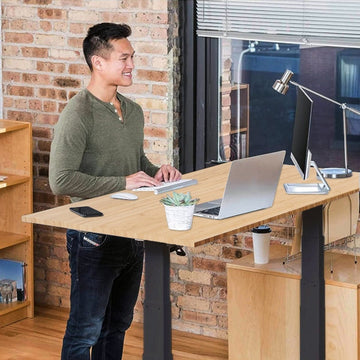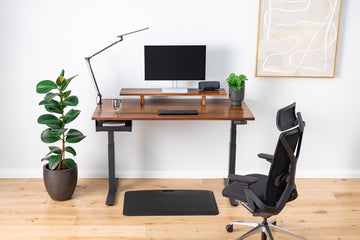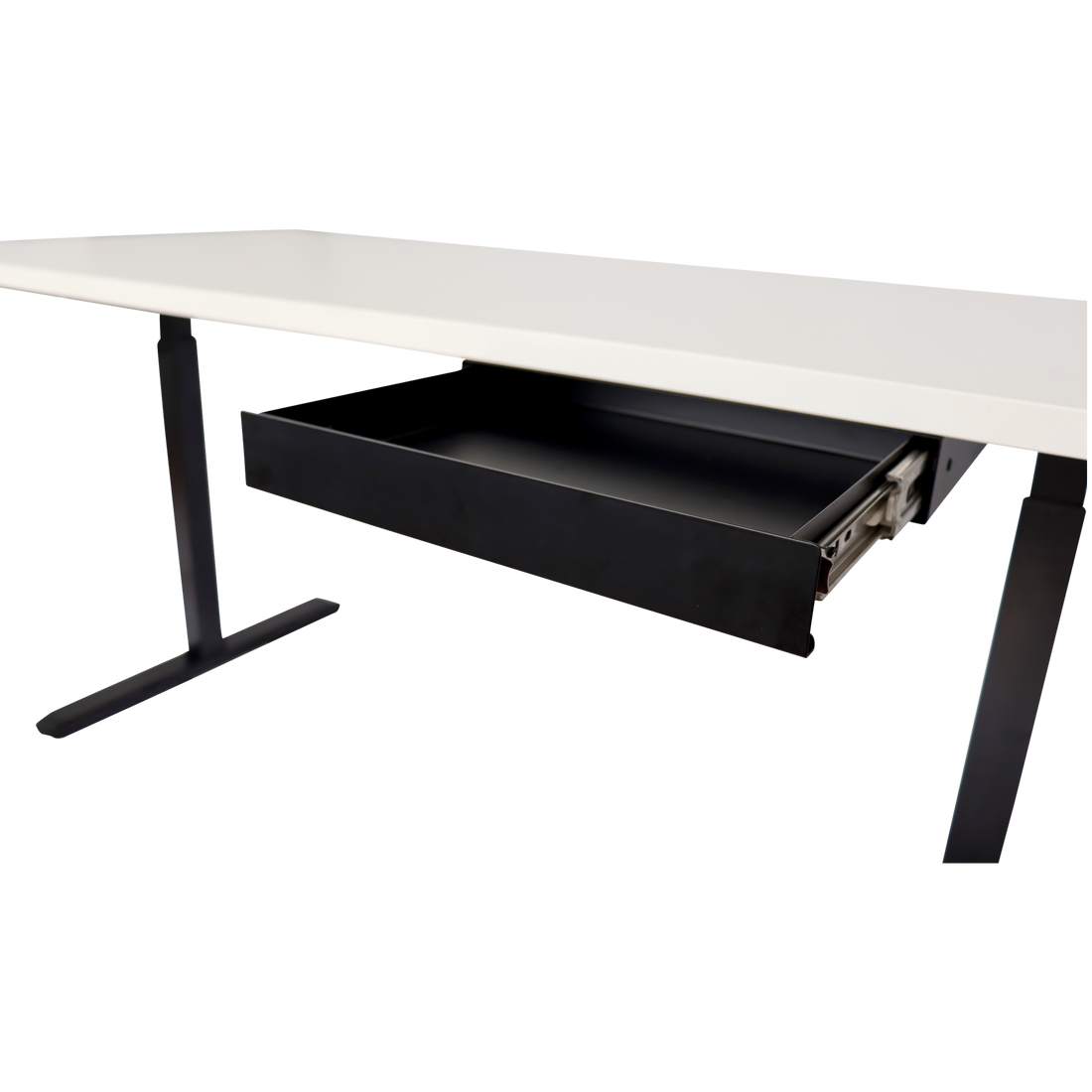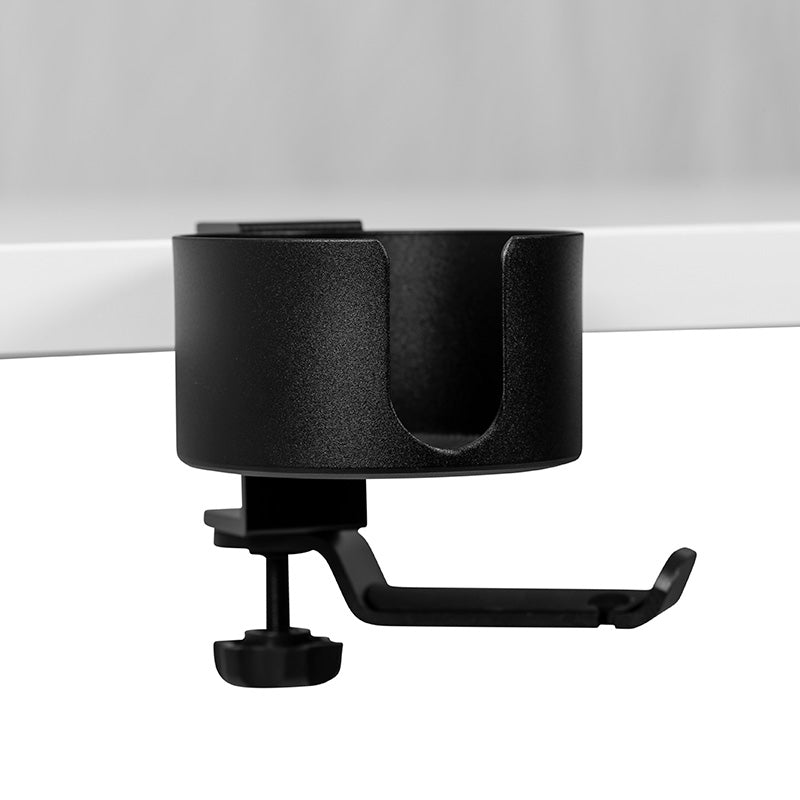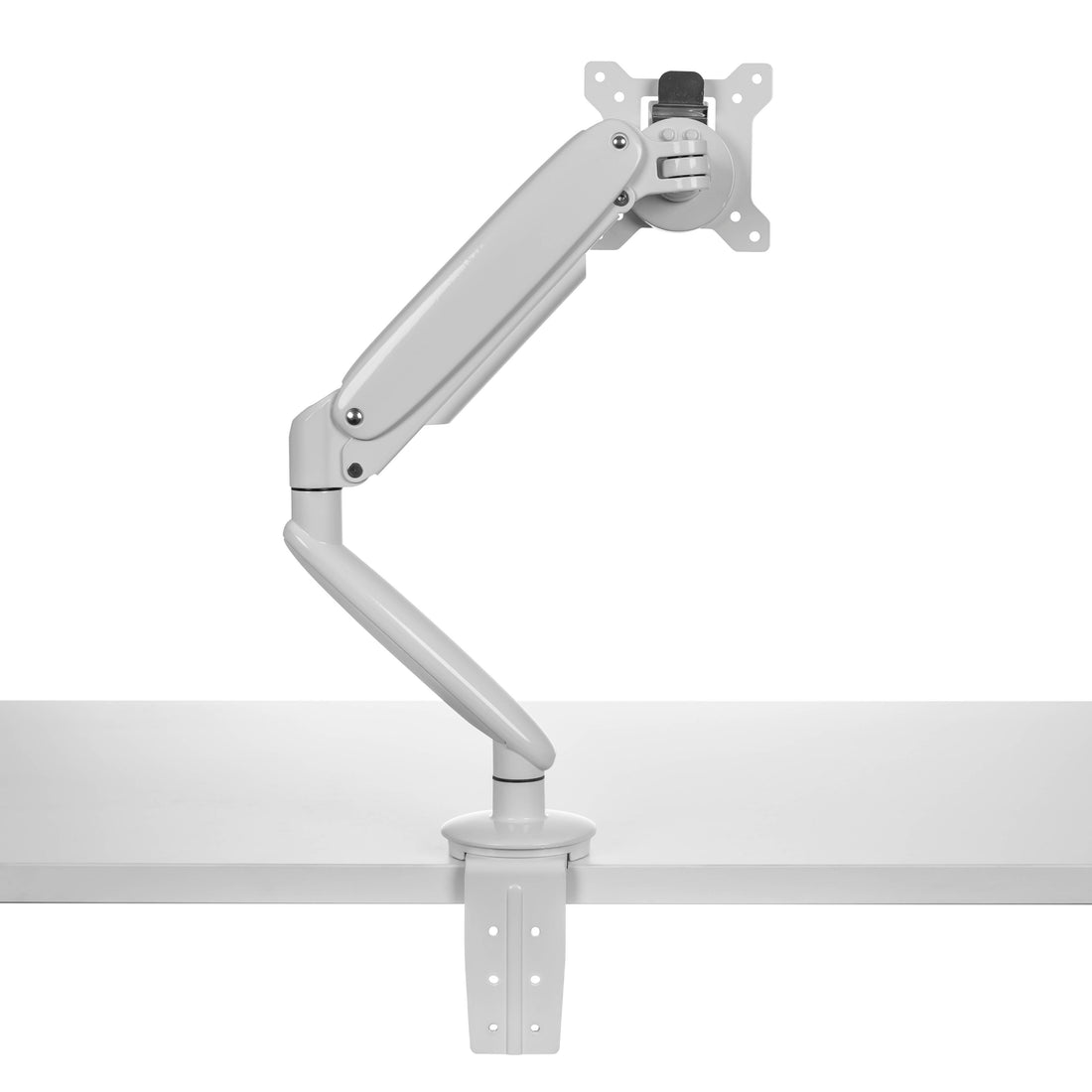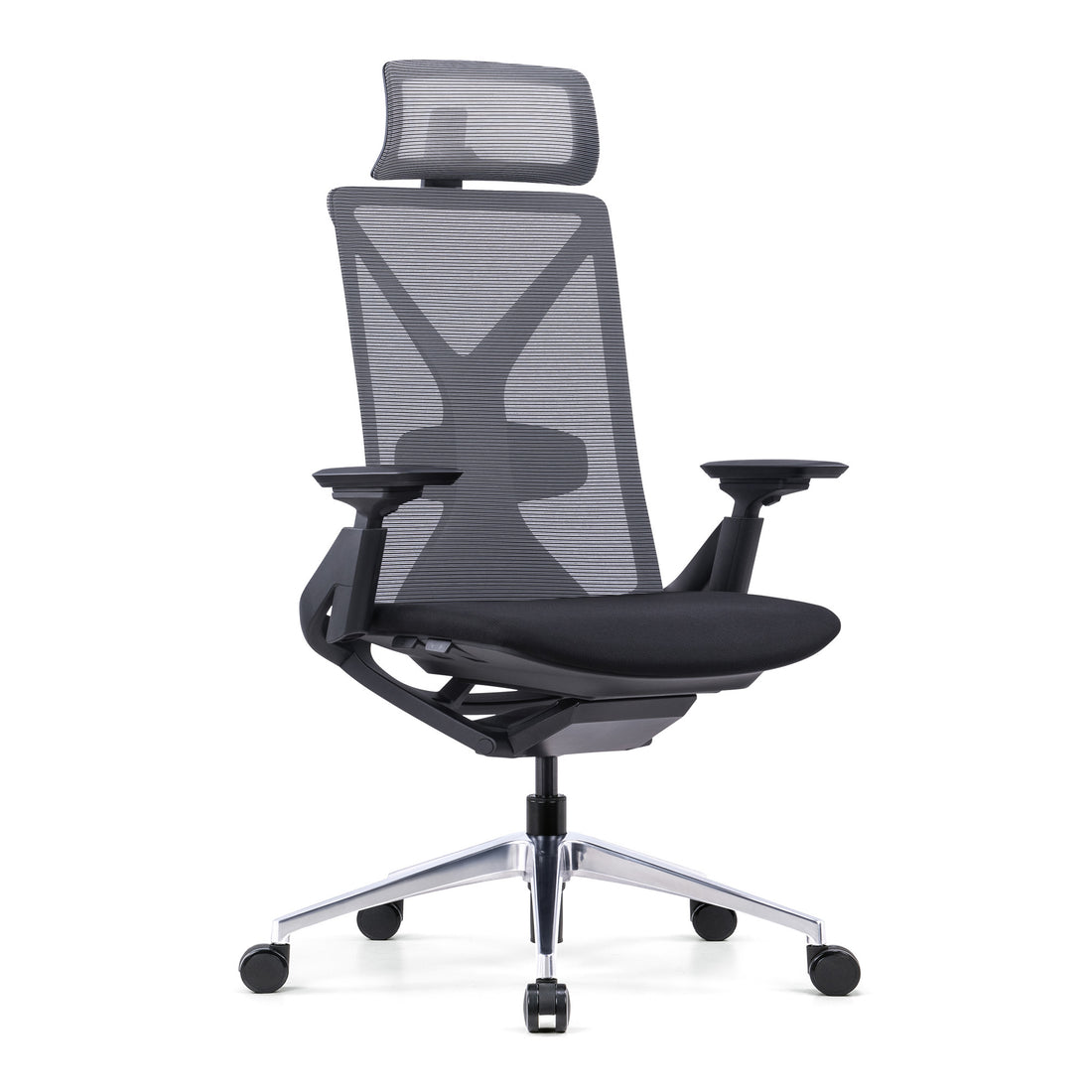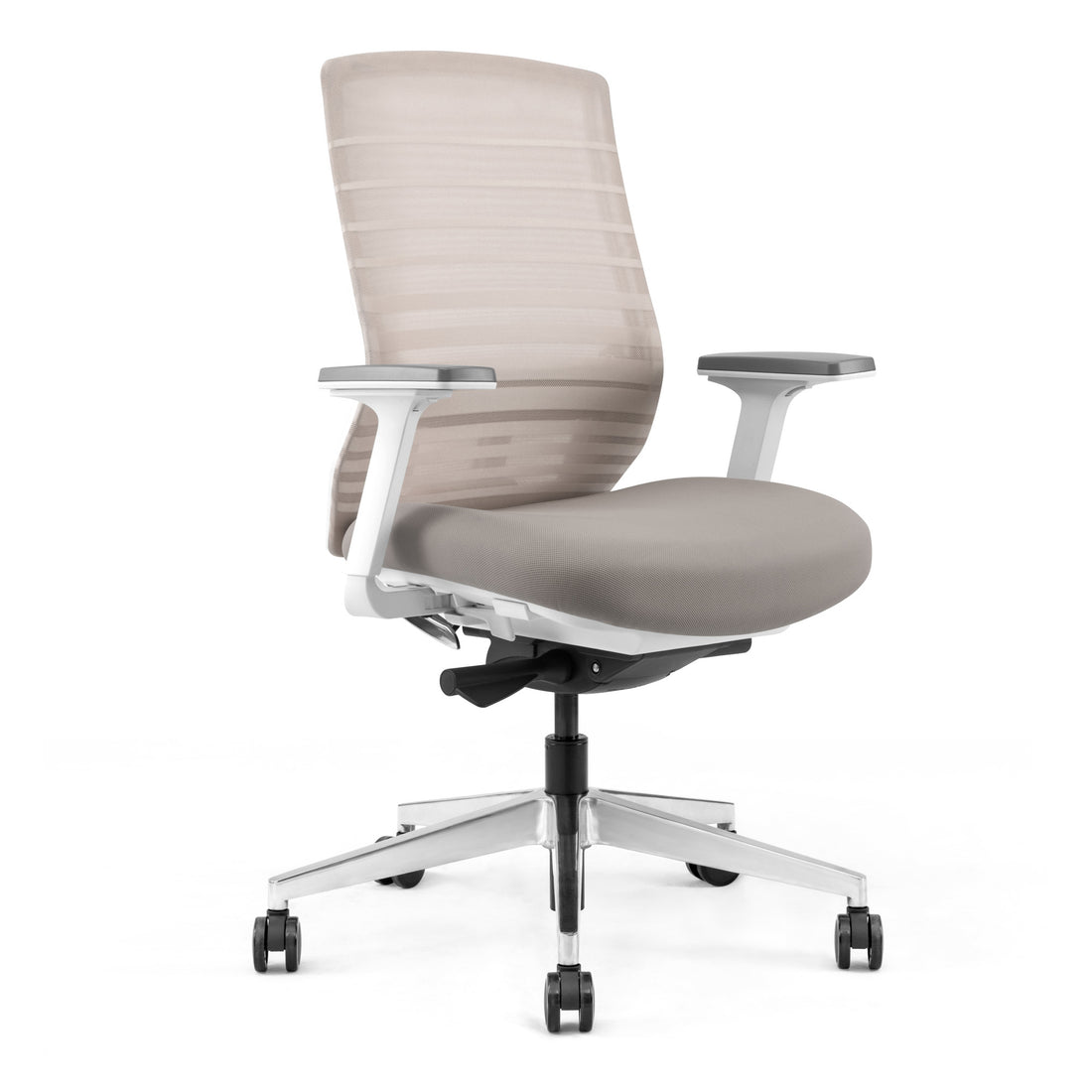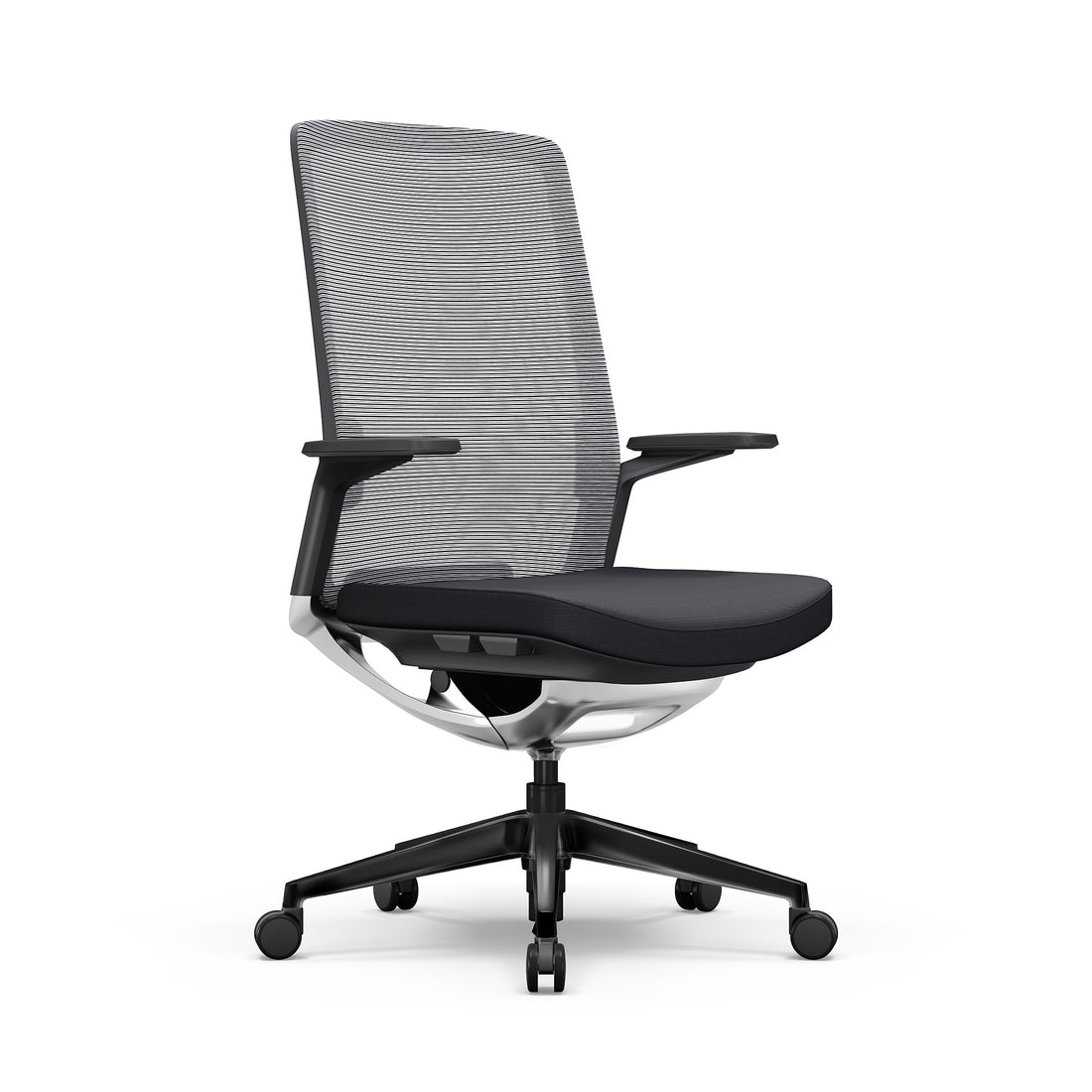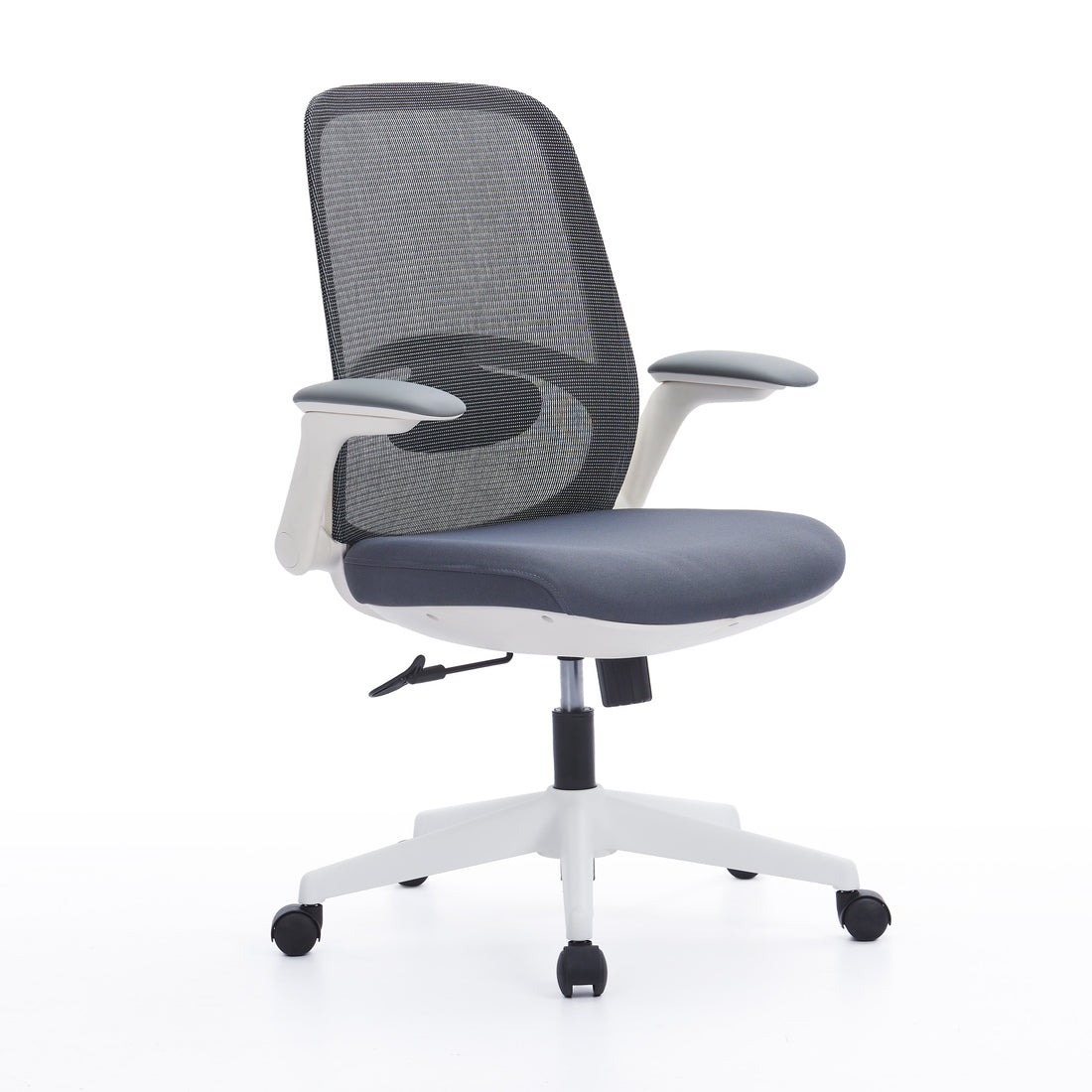A standing desk for tall people is built around three essentials: generous height capacity, stability when fully raised, and a desktop that matches wider shoulders and multi-monitor layouts. If you are 6 ft (183 cm) or taller, an extra tall standing desk that tops out too low forces you to shrug your shoulders, bend your wrists, and crane your neck toward a screen that sits below eye level. The result is fatigue instead of focus, and over time, poor posture and discomfort can become chronic.
Research has shown that properly adjusted standing desks significantly reduce muscle strain and neck and shoulder pain while improving posture and productivity during prolonged work hours (National Library of Medicine). That is why taller users should prioritise height capacity, frame design, and surface size from the outset, and that is exactly how we build at UpDown Desk.
In this guide, we show you how to identify the best standing desk for tall people by translating real ergonomics into simple checkpoints:
-
which height ranges work for bodies over 6 ft (183 cm),
-
how three-stage legs (where available) and robust column engineering reduce wobble and maintain stability at maximum height,
-
and which finishes and layouts complement dual-monitor or creative workflows.
For a quick reference on ideal desk height by body height, start with our standing desk height guide so you can dial in measurements in centimetres (with inches in brackets).
As you read on, you will see specific desk recommendations for long workdays, larger worktops, premium aesthetics, sustainable materials, and corner configurations, plus a concise comparison table for taller users. We will also cover set-up basics for posture and screen alignment, along with accessories that complete an extra tall standing desk configuration, monitor arms, anti-fatigue mats, and tidy cable routing, so your workspace looks sharp and feels comfortable all day.
Why Tall People Need the Right Desk
Taller bodies work through a different range of motion. Shoulders sit higher relative to the keyboard, elbows travel further to reach 90 degrees, and eye level is well above the default line that most office furniture targets. When a surface tops out too low, you end up shrugging, bending the wrists, and tilting the head down to meet a screen that never quite reaches eye level. Over a full day, that means fatigue instead of focus.
A well-matched setup for standing desks for tall people aligns three things at once: desk height that lets the forearms sit parallel to the floor, a screen positioned at eye level without chin tucking, and a stable frame that does not shimmy when fully extended. Get those basics right and you protect your neck, shoulders, and lower back while unlocking better concentration and longer, more comfortable work sessions.
How to Choose the Right Standing Desk for a Tall Person
Start with fit, then refine the feel. When we help tall customers pick a frame, we first confirm maximum height, then check stability at full extension, desktop size for dual monitors and finishes that suit the room. Memory presets, anti-collision and quiet motors round out everyday ease of use.
Below are specific picks for different tall-user scenarios. Each option links directly to a suitable model so you can compare finishes and specs side by side.
Height Range That Works for Over 6-Foot Users (and Extra-Tall Setups)
A tall frame needs generous travel without sitting on the top stops all day. The Pro Series Melamine 2-Leg Electric Standing Desk offers a wide usable range, smooth electric adjustment, and clean styling suitable for home or office. It is a practical starting point if your priority is hitting comfortable typing height and keeping posture neutral during long focus blocks.
Strength and Stability for Long Workdays
If you spend many hours upright or lean on the desk while typing, choose a heavier build that feels solid at full height. The UpDown Desk Pro Series with Acacia Desktop pairs a sturdy frame with a dense, durable surface and a lift capacity of up to 150 kg, so it stays stable even when supporting dual monitors, docking stations, or other heavy equipment. This planted feel at full extension helps tall users who prefer a firm platform for mechanical keyboards, drawing tablets, or number-heavy work.
Extra Workspace for Larger Setups
Wide shoulders and dual monitors benefit from a larger worktop. The Pro Series American Oak brings extra width and depth for multi-screen layouts, speakers, and a laptop stand. The darker finish adds visual weight that suits mature office aesthetics without compromising function.
Premium Finishes That Elevate Your Office
If you want a refined look that still serves tall ergonomics, the Pro Series Walnut Standing Desk blends a premium finish with everyday practicality. It is a good fit for executive home offices and client-facing spaces where the desk must both perform and present.
Sustainable Materials with Ergonomic Benefits

Bamboo offers a warm, natural texture with a reassuringly firm feel under the wrists. The UpDown Desk Pro Series with Bamboo Desktop balances sustainability and comfort, making it a strong choice if you want an eco-conscious surface that still supports a tall posture.
Corner Designs for Maximum Space
L-shaped layouts carve out a command centre for creative and analytical work. The UpDown Desk Pro Series Bamboo Electric Corner Standing Desk provides expansive space for ultra-wide monitors, reference materials, and docking stations while keeping the primary typing zone directly in front of you for neutral shoulder positioning.
Standing Desk Comparison for Tall People: Features at a Glance
| Product Name | Best For | Height Range (cm) | Key Features | Style/Finish |
| Pro Series Melamine 2-Leg Desk | Basic ergonomic height needs | 64–129 (25.2–50.8 in) | Wide height range, electric adjustment | White Melamine |
| Pro Series with Acacia Desktop | Long hours + heavy use | 64–129 (25.2–50.8 in) | Heavy-duty frame, excellent stability | Acacia Wood |
| Pro Series American Oak Desktop | Dual-monitor or wide setups | 64–129 (25.2–50.8 in) | Larger desktop, premium finish | Espresso Ash |
| Pro Series Walnut Desk | High-end office aesthetics | 64–129 (25.2–50.8 in) | Sleek premium finish, functional design | Walnut Finish |
| Pro Series with Bamboo Desktop | Eco-conscious tall users | 64–129 (25.2–50.8 in) | Sustainable bamboo, ergonomic shape | Natural Bamboo |
| Pro Series Bamboo Corner Desk | Max workspace + ergonomic L-shape | 64–129 (25.2–50.8 in) | Space-saving corner layout, bamboo surface | Natural Bamboo |
Standing Desk vs. Desk Converter for Tall People: Which Is Better?
For most users above 6 ft (183 cm), a full frame with a higher top height is the safer choice. You get the reach you need, better stability and room for wider peripherals. A desk converter can still help if you are attached to your existing desk or have a compact space. The key is vertical reach and monitor placement. If a converter does not lift the keyboard and screen high enough, you end up repeating the same posture issues.
If a converter suits your space or budget, explore options under desk risers and converters and check the maximum lift. Look for models that keep the keyboard tray close to elbow height and allow the monitor to reach eye level without forcing your chin down. A converter is also a good interim step while you plan a full upgrade to the best standing desk for tall person in your office.
To make the decision clearer, we use a simple comparison matrix to help you understand which option is the better fit for your workspace and workflow:

If you find yourself split between several of these points, starting with a converter is a smart way to experiment with standing work habits. Once you understand your ideal height range and monitor positioning, you can confidently invest in a full standing desk designed for taller users.
How to Set Up a Standing Desk for Tall People
Set the fundamentals before you add accessories. This section explains how taller users can place the desk, keyboard and monitors in neutral positions, then fine tune to match individual reach. Use these steps to turn a standing desk for tall people into an all-day comfortable set-up.
Finding the Right Desk Height
Getting the height right is the foundation of an ergonomic setup for taller users. We always encourage our customers to use their own bodies as a guide rather than relying on standard numbers. Once you learn the simple alignment points, elbows, wrists, shoulders and eyes, you can quickly dial in a neutral posture that reduces strain and keeps energy levels consistent throughout the day.
We recommend this quick checklist to find your ideal standing position. Keep measurements in centimetres first, with inches in brackets:
-
Stand tall with feet about hip width apart and relax your shoulders.
-
Bend your elbows to roughly 90 degrees and let your forearms sit parallel to the floor.
-
Raise the desk until the keyboard’s home row meets your relaxed hand height.
-
Keep wrists straight. If you feel pressure, adjust a few millimetres up or down.
-
If you use a separate keyboard tray, set it at the same height as your ideal typing position.
-
Set the monitor so the top edge is near eye level. Keep the screen about an arm’s length away, usually 50 to 75 cm (20 to 30 in).
-
For an easy reference by height, check out our standing desk height guide and fine-tune from there.
Micro tip for mechanical keyboards at full height:
Keep the board tilt low or flat to avoid wrist extension, and use a light touch on the keys. A slim wrist rest can further reduce strain. If the key switches feel tiring at full height, consider a lighter switch weight or lower the desk slightly until your wrists stay neutral.
Setting Monitor Height and Distance
Once the desk is at the right height, the next priority is screen placement. The top of your monitor should be roughly at eye level so your neck stays neutral, and the centre of the screen just below the eye line to avoid tilting your head down.
Keep the display about an arm’s length away, usually 50 to 75 cm (20 to 30 in), and make sure dual monitors are level and aligned. If standard stands don’t reach the right height, monitor arms are an easy way to fine-tune height, distance and angle without cluttering the desk.
Essential Accessories for Tall Standing Desk Users
Before you dive into specific items, handle the small details that make tall set-ups feel finished. Good cable routing prevents snags when the desk moves, keeps weight off connectors and preserves a clean line across a wider desktop. See purpose-built options for tidy runs under desk cable management, and add pass-throughs where needed with grommets.
Monitor Arms to Align Eye Level
A quality arm lets you raise, tilt and pull the screen forward so eye level and viewing distance work at full standing height. It also helps dual-monitor layouts align edge to edge. If you need additional mounting formats or accessories for unusual screens, check the broader range under monitor arms and mounts.
Anti-Fatigue Mats That Reduce Lower Body Strain
Standing on a hard floor taxes ankles, knees and hips over time. An anti-fatigue mat spreads pressure and adds a small amount of give so your legs keep micro-moving rather than locking. For tall users, that light cushioning can be the difference between lasting an hour and lasting all afternoon. Explore supportive options in anti-fatigue mats.
Ergonomic Chairs for Sit-Stand Balance
Even the most committed stander sits part of the day. Choose a chair with easy height adjustment, good lumbar support and a waterfall seat edge so thighs do not press on the underside at higher chair settings. If you alternate often, consider a perch stool for quick transitions that keep hips above knees, which tall users often find more natural.
Footrests for Leg Support and Postural Relief
A footrest offers a second resting height so you can shift weight through the day. This small change reduces lower-back tension and encourages a more open hip angle. Tall users gain even more from this habit because long femurs make a single static stance feel tiring sooner.
Conclusion: Find the Best Standing Desk Setup for Tall People
A standing desk for a tall person succeeds when it matches your reach, holds steady at full height and gives you enough surface area to work without compromise. Start with a height range, confirm stability, pick the desktop that fits your monitors and peripherals, then add the essentials that keep posture natural. Whether you lean to premium finishes, sustainable materials or corner layouts, the models above give you a clear path to a best standing desk for tall people set-up that looks cohesive and feels good all day.
Frequently Asked Questions About Standing Desks for Tall People
Are Standing Desks Good for Tall People?
Yes, provided the desk reaches your neutral typing height and stays steady when fully raised. Pair the desk with a monitor arm so the display meets eye level, and you will remove the most common sources of neck and shoulder strain in taller users.
How Tall Should My Standing Desk Be Based on My Height?
Use elbow height as the anchor. Stand upright, relax the shoulders and set the desk where elbows bend to about 90 degrees. For many people around 6 ft (183 cm), that ends up near the mid-40s in inches, which translates to the 110 to 120 cm range. Adjust a little up or down to remove wrist pressure.
Can I Make My Current Standing Desk Taller?
Sometimes. A monitor arm can correct screen height immediately. Shoes with a slight rise and a thicker anti-fatigue mat add a small amount of effective height. If the typing surface itself is still too low at full extension, you will need a frame with greater top height, ideally a three-stage design that remains stable.
Are Standing Desk Converters a Good Option for Tall People?
They can be, if the converter raises both keyboard and monitor high enough for your body. Check the maximum lift carefully. If you find yourself hunching, a full standing desk is the better long-term choice.
How Tall Should a Desk Be for a 6 FT Person?
As a starting point, aim for a desk height that matches elbow level when you stand relaxed. For 6 ft (183 cm), this often falls near 110 to 115 cm (43 to 45 in). Fine-tune by feel to keep forearms parallel to the floor and wrists neutral.

